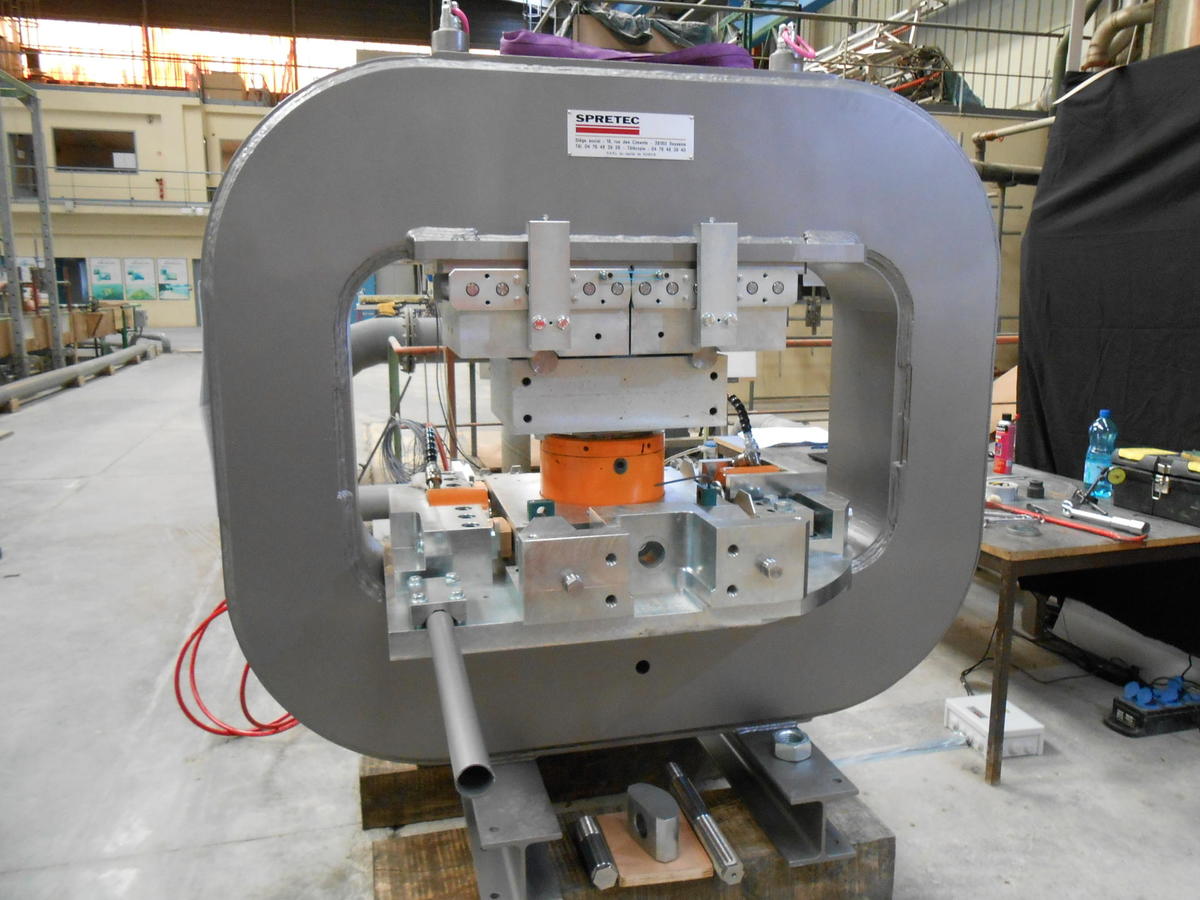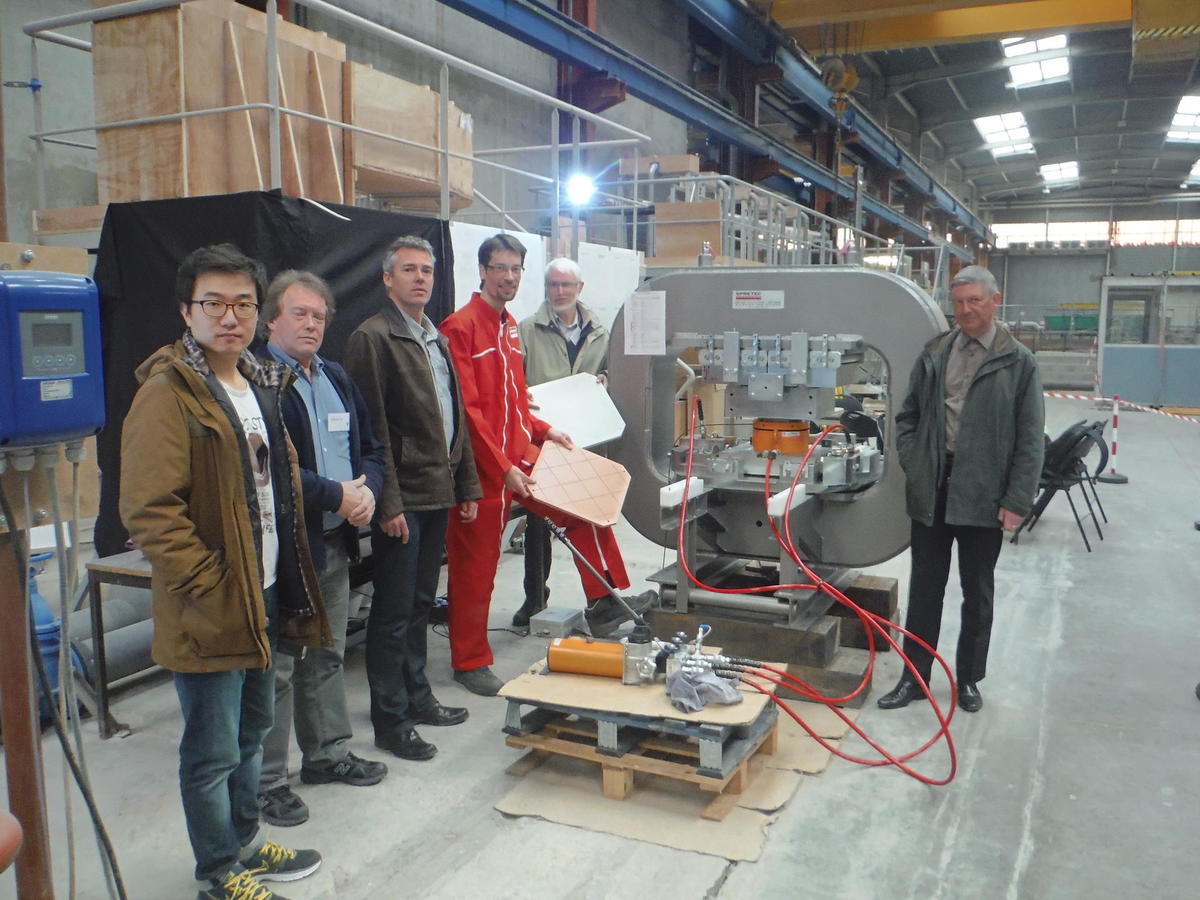
Test bench for a sliding system in the context of the ITER project
Artelia's Laboratory facilities put to work for the ITER project
Background to the tests
Design and construction of a test bench to measure sliding forces ITER Project
In the context of the international civil nuclear fusion research project (ITER), Spretec developed a test bench at Artelia’s Laboratory in order to measure the forces required to move a 250-tonne weight by sliding it.
The actual package is a 750-tonne angular segment that, pieced together with its eight neighbours, will constitute the toroid of the Tokamak (i.e. the core of the fusion reactor). The level of precision required for the joining operations is less than a millimetre, which is exceptional for packages of this size.
The segment rests iso-statically on three points forming a triangle, each of which can be moved in order to position the package according to all six degrees of freedom (three translational and three rotational).
The point subjected to the greatest loads must be able to bear 250 tonnes, and it is obviously not easy to procure such a heavy weight. Spretec hence came up with the idea of designing a press to simulate this load, by crushing a test pad on a fixed table using a hydraulic jack.
Using this principle, various materials (non-ferrous and polymers) were tested in a variety of conditions (dry, lubricated, etc.). Since the table rotates, it can also be used for a displacement test under load in both horizontal directions, to assess the influence of roughness of the elements in contact.

Main features
- Effort: 750 T on 3 supports
- Précision: 0,5 mm
- 6 positioning axes
Services provided
On the basis of very open specifications, Spretec completed all the phases of the study from feasibility through assessment of various solutions to the working design file. This was followed by the production and assembly of the test bench and implementation of the tests at Artelia Laboratory including a demonstration to the client, ITER, that the system is operable and hence that the sliding principle is pertinent. Following on from these tests, the sliding principle (which was competing with others) has been adopted. Assembly of the segments is taking place in 2021, and will continue for several years to come.

